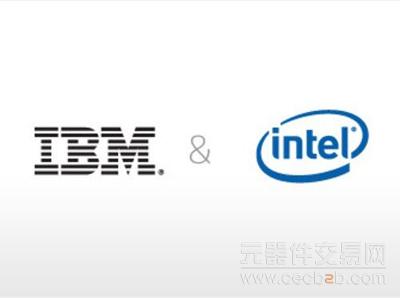元器件交易网讯 据外媒称,日前英特尔和IBM在国际电子元器件大会(IEDM)上为他们最新的22nm级工艺芯片展开斗争。英特尔一位高层就晶圆成本增加和公司芯片制造业务发表了评论。

IBM称它正在研制3-D,22nm处理器,并希望相对于32nm芯片能提高25%到35%。 而英特尔要保持其在22nm芯片领域能批量生产的地位,并在IEDM上公布片上系统更广泛应用的一个变体过程。(元器件交易网刘光明 摘译)
外媒来源原文:
IBM, Intel face off in 22 nm process at IEDM
Intel and IBM went head-to-head with their latest 22 nm technologies in back-to-back papers at the International Electron Devices Meeting (IEDM) here. Separately, a top Intel fab executive commented on increasing wafer costs and the company’s foundry business.
IBM said it is prototyping server processors in a new 3-D ready, 22 nm process technology it hopes will deliver 25 to 35 percent boosts over its 32 nm node. Intel retains an edge with several 22 nm chips already in volume production, and disclosure at IEDM of a variant of the process for system-on-chips for a wide range of applications.
The Intel paper showed support for “high drive current across the spectrum of leakage and a full suite of SoC tools,” said Mark Bohr, head of Intel’s process technology development group in a brief discussion with EE Times before the session. The process is geared for a much wider array of designs than that of IBM, he said.
Bohr said Intel’s 22 nm FinFET process is cost effective, contradicting report it is 30 to 40 percent more expensive than TSMC’s 28 nm planar process. The addition of FinFET adds only three percent to the cost of the process. Its use of 80 nm minimum feature sizes can be made with a single pass of 193 nm lithography tools, making it cost effective, he added.
Projections from an Imec keynote that 14 nm wafers will be 90 percent more expensive than 28 nm parts due to the lack of EUV lithography are inaccurate, Bohr said. The cost increase for 14 nm wafers at Intel “is nowhere near that,” he said.
“Cost per wafer has always gone up marginally each generation, somewhat more so in recent generations, but that’s more than offset by increases in transistor density so that the cost per transistor continues to go down at 14 nm,” he told EE Times.
Separately Bohr said Intel does have a growing foundry business that may include some higher volume applications than its current announced customers such as FPGA startup Achronix. However, “we don’t intend to be in the general-purpose foundry business…[and] I don’t think the [foundry] volumes ever will be huge” for Intel, he said.
